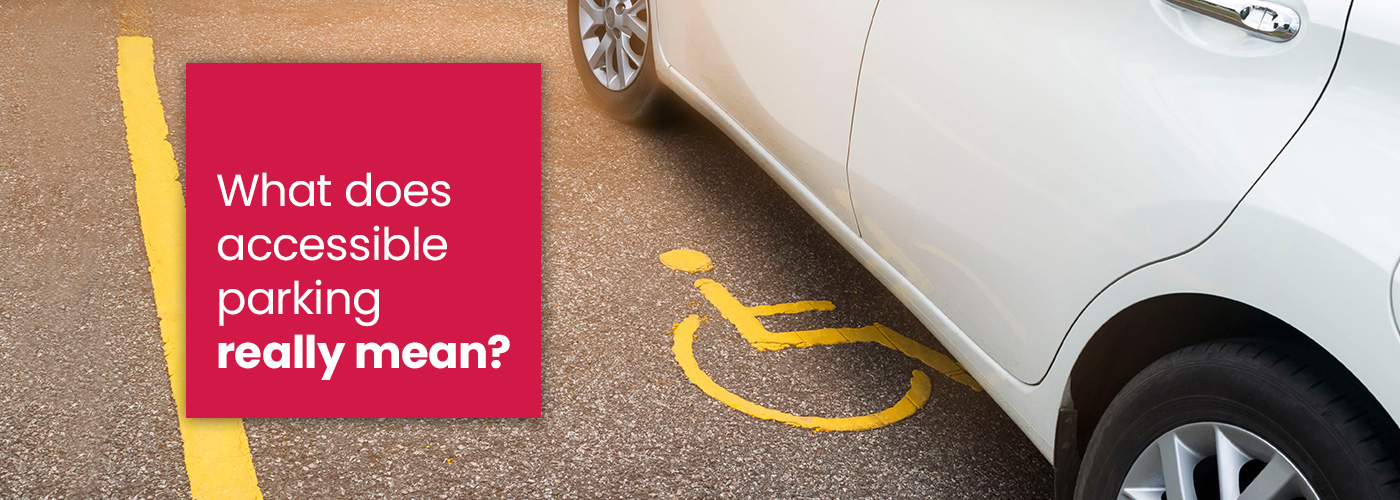Hidden disabilities: the connection between accessibility and parking spaces

Public commemorations like the anniversary of the Americans With Disabilities Act and observances like National Disability Employment Awareness Month provide critical opportunities for the public to enhance their knowledge about people with disabilities and the challenges that they overcome every day.
SourceAmerica is proud of its efforts to help lead these types of conversations with stakeholders both within and surrounding the disability community. The organization continues to drive discussions about accessibility for people with disabilities – both inside and away from the workplace. One topic that is often overlooked is the use of the International Symbol of Access (ISA), commonly referred to as the “Wheelchair Symbol.”
The ISA is an emblem that is familiar around the globe. Dating back to its creation by Danish design student Susanne Koefoed in 1968, the ISA is an international standard that denotes where access for people with disabilities is available. The image of a white stick figure sitting in a wheelchair within a blue squared background is used in numerous places, indicating accessibility. It gives people with – and without – disabilities a heads-up that something is accessible.
The ISA is often connected to places or things that are specifically designed for people with disabilities, including parking spaces, restrooms, ramps, buttons for opening doors and drinking fountains. These are some of the more common locations where this symbol is found.
The ISA has been a successful moniker for more than 50 years. However, it can also cause misconceptions about what constitutes a disability. In the instance of a parking space, there are common scenarios which may cause confusion or a second look by bystanders.
“There are many disabilities that are invisible that result in mobility issues such as a heart condition or degenerative knees – both of which can limit a person’s ability to walk longer distances across a parking lot,” said Sabrina Harmon, a SourceAmerica training lead. “Well-intentioned people can mistake the ISA to mean only people using wheelchairs are authorized to use an accessible parking space. In many cases, an onlooker may see someone pull into an accessible parking space, get out, and look as if they are not in need of any accessible support. It can cause strong feelings, lead to confrontation, and has been known to cause unfortunate altercations between parties.”
Another challenge surrounding accessible parking spaces appears when people use them who may not need the parking space for actual mobility as much as they need it for the enhanced physical space that often is available with these parking spots. The extra room allows for improved maneuverability in getting something larger - like an electric scooter or wheelchair - in and out of a vehicle. These spaces can also provide additional access and safety for someone who may be appropriately using an accessible space temporarily and may not be used to their mobility situation. This comes into play when someone has recently had surgery or sustained an injury and may be using a walker or crutches on a temporary or non-permanent basis.
Obtaining an accessible parking placard or license plate involves several steps, including a physician’s note and a visit to the state Department of Motor Vehicles in order to complete the required process. “These placards and license plates are not granted to just anyone. So when you see a person that does not necessarily look disabled, it’s very likely that they have a hidden disability. They deserve your respect, patience and support,” said Harmon.
SourceAmerica is a connector for people with disabilities and employment opportunities but is also helping to drive the greater conversation about inclusivity and education by engaging with members of the public through social media, a popular speakers bureau of self-advocates, and online content designed to bring awareness to increasingly critical topics across the disability community.
Education remains a key component for better understanding of accessibility issues across the disability community. While the ISA symbol denotes a person using a wheelchair, it is only a visual representation for people with a condition that requires accessibility. SourceAmerica remains focused on improving all aspects of awareness and inclusiveness for people with disabilities.